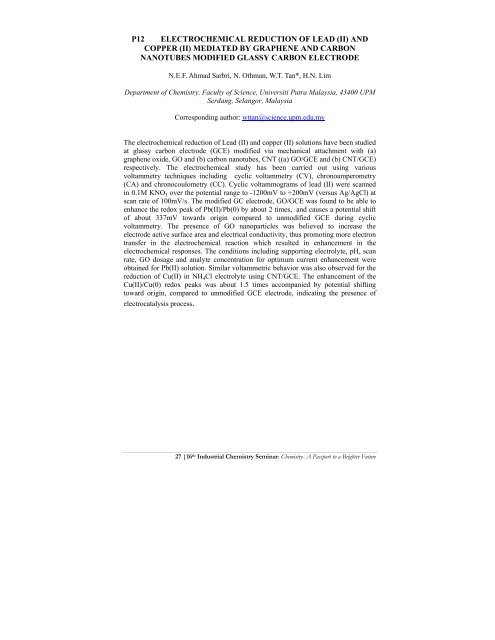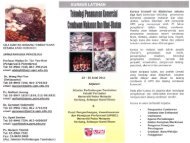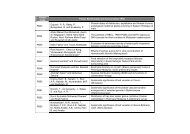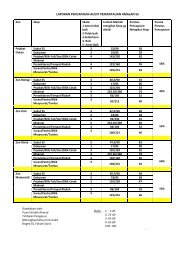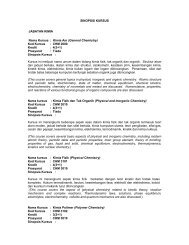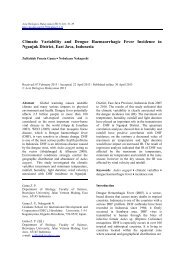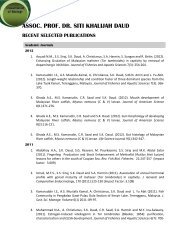Programme Book - UPM - Universiti Putra Malaysia
Programme Book - UPM - Universiti Putra Malaysia
Programme Book - UPM - Universiti Putra Malaysia
You also want an ePaper? Increase the reach of your titles
YUMPU automatically turns print PDFs into web optimized ePapers that Google loves.
P12 ELECTROCHEMICAL REDUCTION OF LEAD (II) ANDCOPPER (II) MEDIATED BY GRAPHENE AND CARBONNANOTUBES MODIFIED GLASSY CARBON ELECTRODEN.E.F. Ahmad Sarbri, N. Othman, W.T. Tan*, H.N. LimDepartment of Chemistry, Faculty of Science, <strong>Universiti</strong> <strong>Putra</strong> <strong>Malaysia</strong>, 43400 <strong>UPM</strong>Serdang, Selangor, <strong>Malaysia</strong>Corresponding author: wttan@science.upm.edu.myThe electrochemical reduction of Lead (II) and copper (II) solutions have been studiedat glassy carbon electrode (GCE) modified via mechanical attachment with (a)graphene oxide, GO and (b) carbon nanotubes, CNT ((a) GO/GCE and (b) CNT/GCE)respectively. The electrochemical study has been carried out using variousvoltammetry techniques including cyclic voltammetry (CV), chronoamperometry(CA) and chronocoulometry (CC). Cyclic voltammograms of lead (II) were scannedin 0.1M KNO 3 over the potential range to -1200mV to +200mV (versus Ag/AgCl) atscan rate of 100mV/s. The modified GC electrode, GO/GCE was found to be able toenhance the redox peak of Pb(II)/Pb(0) by about 2 times, and causes a potential shiftof about 337mV towards origin compared to unmodified GCE during cyclicvoltammetry. The presence of GO nanoparticles was believed to increase theelectrode active surface area and electrical conductivity, thus promoting more electrontransfer in the electrochemical reaction which resulted in enhancement in theelectrochemical responses. The conditions including supporting electrolyte, pH, scanrate, GO dosage and analyte concentration for optimum current enhancement wereobtained for Pb(II) solution. Similar voltammetric behavior was also observed for thereduction of Cu(II) in NH 4 Cl electrolyte using CNT/GCE. The enhancement of theCu(II)/Cu(0) redox peaks was about 1.5 times accompanied by potential shiftingtoward origin, compared to unmodified GCE electrode, indicating the presence ofelectrocatalysis process.27 |16 th Industrial Chemistry Seminar: Chemistry- A Passport to a Brighter Future


